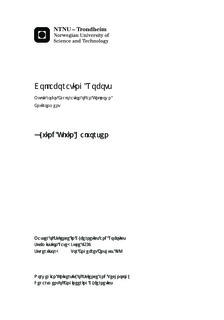Collaborating Robots - Multi-robot Exploration of an Unknown Environment
Master thesis
Permanent lenke
http://hdl.handle.net/11250/2433768Utgivelsesdato
2014Metadata
Vis full innførselSamlinger
Sammendrag
This thesis aims to develop and implement an algorithm for collaboration, such that two LEGO-robots can collaborate on mapping an unknown area using infrared sensors, a simultaneous localization and mapping (SLAM) algorithm and controlled from MATLAB.
In order to have a testing platform during development of the algorithms, the simulator was updated to allow for parallel operations and communication.
Further, the communication protocol between the robots were implemented such that data could be exchanged in a reliable fashion, which was the key for allowing collaboration.
The robots exchanged their local SLAM-generated maps such that they could operate in one common map. The map was merged by removing the initial distance between the robots.
For the NXT-robot, positioning and feedback on the sensor tower was implemented, which improved the sensor data significantly.
The main objective was to develop and implement a navigation algorithm for choosing target points, a path planner for ensuring collision free driving and coordination of the robots in order to exploit the use of multiple robots.
The navigation algorithm was implemented with a Frontier-based approach and a cost function, which was minimized in order to find the next target point.
The path planner was implemented by a Breadth-first search (BFS) algorithm and the coordination was achieved by a CLIENT/SERVER- structure.
Finally, the algorithm was tested in the simulator and on the physical system. It was shown that the robots were able to collaborate on the mapping task, as was intended in the problem description.
